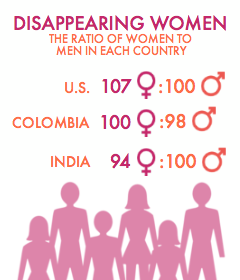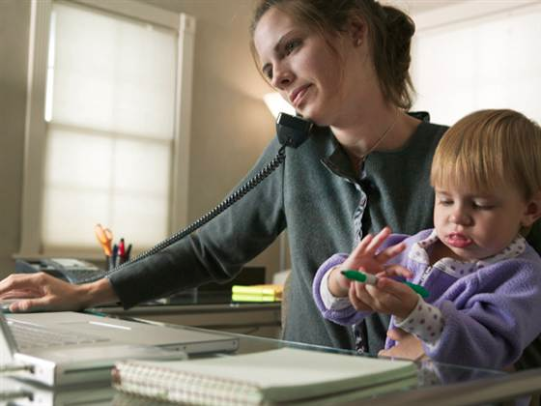
April 15, 2013 | Education, Economic Opportunity
The Face of American Poverty Today
Are you a single mom? Have a job? You’re probably poor.

Part 1 of a 3-Part Series
By Amanda L. Freeman
"Leaning in" and smashing glass ceilings are great goals—but they are the last things on the minds of 27 million American women struggling just to hang on to their homes and feed their kids. These women make up the demographic that is the most likely to be poor in the U.S.: the single mom.
But here's the surprising thing: Most of those single moms are working. They remain mired in poverty because they tend to have low-wage jobs without benefits or opportunities for advancement—and because the U.S. has one of the skimpiest social safety nets in the western world. And the Great Recession has only made things worse.
Who’s helping: Learn about groups that are getting women out of poverty
"Although women are participating at the highest rate in modern times in the U.S. formal workforce, they continue to face obstacles to greater economic self-sufficiency and equality," says Maya Harris, vice president of Democracy, Rights and Justice for the Ford Foundation.
The Ford Foundation is one of a broad swath of groups—from Legal Momentum to the Aspen Institute—taking a hard look look at this dire reality. Over the next few days, Women in the World.org will provide an up-close view of this problem, with profiles in poverty, and potential solutions. But first, the cold facts:
Single mom = poor kids
Through this Great Recession, the arms of poverty stretched far and wide, beyond inner cities and rural areas like Appalachia. Hunger is not just the third world problem; only three other countries in the developed world—Mexico, Chile and Turkey—have a higher child poverty rate than the United States.
Single mothers are the most likely demographic group to be poor. And half of all mothers will spend some time as sole parents, though many didn't plan on it. Around 47 percent of kids living with a single mother are poor, four times the poverty rate for the children of married couples, according to the Department of Health and Human Services.
For a single mother and a child, the poverty line hovers around $15,000, which roughly coincides with the minimum wage in most states. Making things worse, millions more earn just above the poverty line, disqualifying them for benefit programs. Meghan, a low-income single mom from rural Pennsylvania, felt hopeless when her family was rejected for public assistance because their income was seven dollars over the state guideline. "We were working so hard, but we just couldn’t pay the bills every month," she says.
Why so poor?
Why are so many single mothers poor? First, the majority of them receive either inadequate or zero child support from the fathers of their children. Support guidelines vary from state to state, but incredibly the minimums fall between $15 and $30 per week.
Second, the U.S. does not provide a comprehensive safety net of public benefits. "Our social welfare programs are much less generous than other high-income countries, and low-wage work is much more common in America," says Timothy Casey, a senior attorney for Legal Momentum. In fact, all other high-income countries offer some form of "child allowance," a monthly payment to assist parents in caring for their children, according to Casey.
Despite promises to beef up childcare support as poor women moved off welfare, only 15 percent of eligible kids receive subsidized childcare.
Welfare moms are not sitting with their feet up, having babies to keep the benefit checks coming. Yes, more than 90 percent of recipients of cash welfare benefits, known as Temporary Assistance for Needy Families (TANF), are mothers. But poor women can only receive TANF for a lifetime total of 60 months. The overwhelming majority of poor moms are working outside the home, trapped in low-wage jobs without benefits or a chance to advance.
“What we think of as work-family issues for professional women, just do not apply when it comes to poor women,” says Joan Williams, author of Unbending Gender: Why Family and Work Conflict and What To Do About It and reports such as Sick Child Away from Being Fired: When Opting Out is Not an Option.
Williams says the jobs poor women hold are often extremely rigid, so they can't take time off when their child is sick or they need to attend a parent teacher conference. At the same time, "They have unstable hours that change from day to day, which makes arranging childcare, typically with other family members who are in the same types of jobs, very difficult," she says.
The route out of misery
To get better jobs, poor women need access to education. But most states no longer allow higher education to count as "work" for welfare or childcare subsidies. Consider the impact in New York City. In 1995, before welfare reform, 27,000 welfare recipients were enrolled in classes at the City University of New York. By 2000, the number had fallen to between 5,000 and 6,000, where it remains.
Other than a rich husband, education is the best chance for poor women to escape poverty. Someone with a bachelor’s degree earns an average of $36,424 more than a high school dropout. What’s more, when they earn college degrees, 90 percent of welfare recipients get off and stay off welfare.
But affording college today is a squeeze even for middle class families. Pell Grants, the primary source of federal aid for low-income students, cover only about $5,000 per year. Add to the financial stress, parenting responsibilities, piles of paperwork, and the fact that poor moms often need extra help to make up for missed material, and the odds stack up.
Still, poor women struggle every day to get an education. In coming posts, we will bring you stories of a few women who are working very hard to build a better life for their kids and the national organizations that are working tirelessly to clear a path for them.
Amanda L. Freeman is a writer, researcher and doctoral candidate specializing in single mother-headed families.